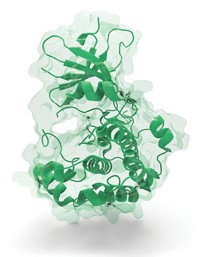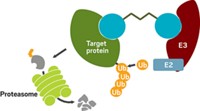Advertisement
Grab your lab coat. Let's get started
Welcome!
Welcome!
Create an account below to get 6 C&EN articles per month, receive newsletters and more - all free.
It seems this is your first time logging in online. Please enter the following information to continue.
As an ACS member you automatically get access to this site. All we need is few more details to create your reading experience.
Not you? Sign in with a different account.
Not you? Sign in with a different account.
ERROR 1
ERROR 1
ERROR 2
ERROR 2
ERROR 2
ERROR 2
ERROR 2
Password and Confirm password must match.
If you have an ACS member number, please enter it here so we can link this account to your membership. (optional)
ERROR 2
ACS values your privacy. By submitting your information, you are gaining access to C&EN and subscribing to our weekly newsletter. We use the information you provide to make your reading experience better, and we will never sell your data to third party members.
Business
Against The Grain
Forma Therapeutics bets on market's appetite for its platform technology
by Lisa M. Jarvis
January 25, 2010
| A version of this story appeared in
Volume 88, Issue 4
In a financing environment that calls for most new biotech companies’ operations to consist of only a briefcase and a BlackBerry, Forma Therapeutics is an outlier. Just a year old, the firm has taken on more than 85 employees, set up sparkling labs in the Science Hotel facility, in Cambridge, Mass., and put together an integrated drug discovery platform. With technology in chemistry and biology, the company believes it can build a pipeline of oncology drug candidates to address previously intractable targets.
In recent years, the biotech landscape has been dominated by lean operations whose main mission is to usher a few key molecules, often licensed from industry or spun out of academia, through only the early stages of development. The complex “platform” companies of the 1990s, which combined several critical pieces of technology that could be applied to create an entire pipeline of compounds, weren’t living up to the hype, and few were getting funded.
“A lot of people wrote off platform technologies,” says G. Steven Burrill, head of the venture capital and merchant banking firm Burrill & Co. Building a platform company takes time, meaning investors can’t exit quickly, and big drug firms have often seemed more interested in renting rather than buying technology platforms in the past.
Today, however, “we see more partnering, but also interesting acquisitions,” Burrill says. “Platforms aren’t dead, and they do represent attractive opportunities.”
Forma’s early success seems to affirm Burrill’s observations: The company has raised a significant chunk of cash from high-profile investors such as Novartis Option Fund and Lilly Ventures and, in a short period, accumulated a stable of drug industry partners. Its goal is to succeed in the business world by combining multiple technologies from the Broad Institute, in Cambridge, Mass., that enable its researchers to tackle cancer targets others haven’t been able to modulate.
Forma was started to catch what founder and Chief Executive Officer Steven Tregay calls “the third wave” of cancer therapies. In the first wave, patients were treated with cytotoxics that primarily came from natural products or their derivatives. The second wave contained therapies such as Novartis’ Gleevec, which goes after a specific genetic mutation implicated in chronic myeloid leukemia. Now, researchers are manipulating biological pathways that are common to a broad variety of cancers, tough as they might be to suppress with drugs.
The past two decades have brought an explosion in the understanding of cancer, particularly in identifying targets that play pivotal roles in its treatment. Yet traditional drug discovery approaches have not yielded molecules that are effective against these targets. Forma is responding with a proprietary set of technologies to, for example, modulate allosteric sites and interrupt protein-protein interactions. “To really capitalize on the future of cancer therapies, we had to think about how to unlock those challenging targets,” Tregay says.
Forma’s executives and financial backers believe these tough targets aren’t going to be cracked with one technology. “It wasn’t enough to have new chemistry,” Tregay says. “One really needed to think about how to screen targets that don’t have an enzymatic function and how a target works in the context of a whole cell.”
The company’s scientific foundation comes from a trio of Broad Institute researchers: Stuart L. Schreiber, Michael A. Foley, and Todd R. Golub. From their research and insights, the company has created a discovery platform that comprises three key technologies. Diversity-oriented synthesis uses the efficiency of combinatorial synthesis to produce molecules with much of the complexity of natural products. The second technology is a family of structure-based drug discovery methods that includes large-scale crystallography and computational solvent mapping, a way of elucidating structural features on a protein that can help scientists design potential small-molecule drugs.
Once Forma uses these two tools to design and synthesize compounds, the firm deploys the third technology, a cell-based screening method that allows the company to understand how the compounds will behave in the real world rather than in a test tube.
By combining these technologies, Forma has already started to find molecules that work against some intractable targets, says Kenneth W. Bair, the company’s head of R&D. How intractable? Of the targets Forma is going after, Bair figures he’s already worked on a good 90% of them during his years with big pharma firms. But those efforts used traditional screening methods with libraries of molecules that looked druglike but turned out to be irrelevant for these types of tough targets, Bair says.
Forma’s leaders believe their approach will enable the company to thrive in what has become a difficult climate for biotech companies seeking funds or partners for discovery programs.
“You look at the average kinase target, and at any given time, there are 10 or 20 programs in that space,” Tregay says. He thinks biotechs with just one good drug candidate in an already crowded field respond by making poor decisions and cutting corners in the development process. Going after targets with only one, or perhaps no, other competitor gives Forma the luxury of making better decisions, Tregay says. “You’re not worried about losing the race by three months,” he adds.
Still, the company has yet to show that one of its molecules works in patients. And Forma recognizes limits to its technology. Traditional enzymatic screening methods yield a range of compounds, and medicinal chemists can then improve those with weaker activity. Although Forma’s whole-cell screening method provides more powerful hits, it can miss some that are only weakly active but potentially still relevant.
“As a medicinal chemist, one of the first things I was wondering is, ‘What about those molecules that don’t get into cells but are active and I can fix?’ ” Bair says. Forma scientists are dealing with potential misses, he says, by trying to get a clear idea of “what the cell-based assays give us and also what we lose.”
Forma is also using its partnerships to strengthen its core technology. Tregay points to a recent deal with Novartis that enables the big pharma firm to access Forma’s cell-based screening technology. “We’re looking at very challenging protein-protein interactions, and it’s a way for us to pressure-test, evolve, and optimize our platform,” he says. Furthermore, anything Forma learns from that collaboration can be applied to its own screening programs.
A pact with the Leukemia & Lymphoma Society, meanwhile, gives Forma access to basic biology research capabilities that a smaller company simply couldn’t afford to maintain in-house. LLS has enlisted Forma to optimize 10 small-molecule drug candidates discovered by academic researchers who are funded by the nonprofit. “Pretty much every major discovery in liquid tumors is tied back to some research funded by LLS,” Tregay notes.
On the other hand, a collaboration with Cubist Pharmaceuticals helps validate Forma’s technology outside the field of oncology. Given Cubist’s focus on anti-infectives, Forma will deploy its platform to work on the difficult task of finding novel antibiotics.
Going forward, the company will continue to build its pipeline, supported by a recently completed second round of financing that brought $25.5 million. That money will give Forma the luxury to advance only the highest quality programs, Tregay says. After all, his goal is to find a partner for Forma’s first compounds this year.






Join the conversation
Contact the reporter
Submit a Letter to the Editor for publication
Engage with us on Twitter